An endearing parrot species is making its way back to the New Zealand mainland after a long absence of 40 years. The Kākāpō birds were once almost wiped out as a result of overhunting.
Meet the Kākāpō
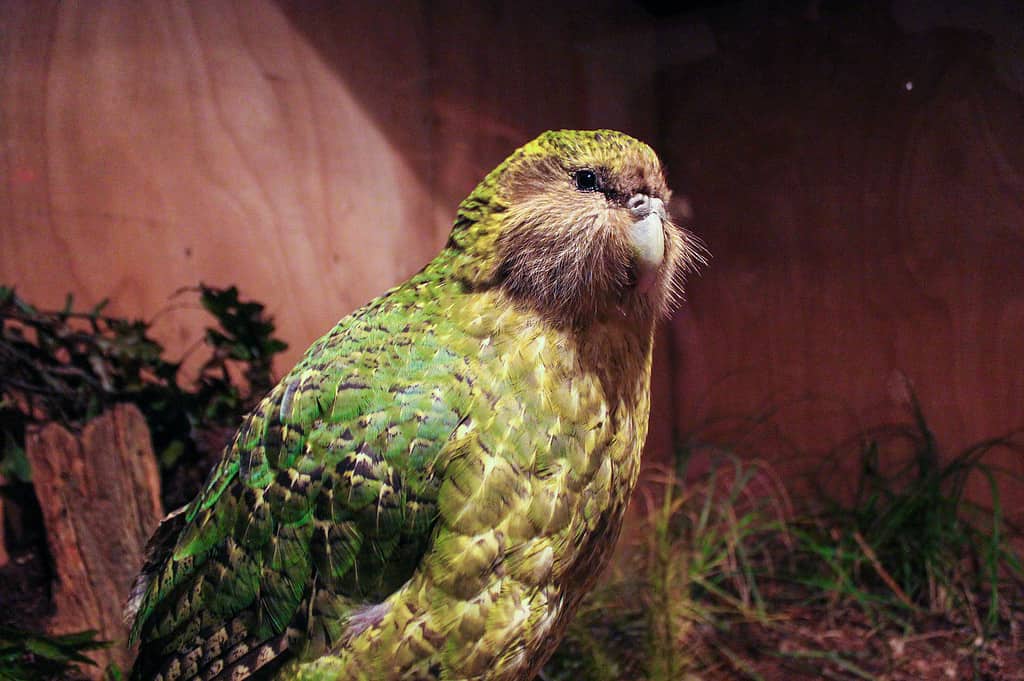
There population of the kakapo is only 252 birds.
©Imogen Warren/Shutterstock.com
The Kākāpō is a unique and endangered bird native to New Zealand. It is the only species in its genus and the world’s only flightless parrot. It is a large, nocturnal bird, measuring around 23-27 inches (60-70cm) in length and weighing up to 9 pounds (4kg).
The Kākāpō has short, thick grey-brown plumage, large, round wings, and a short tail. Its head is small, and its eyes are yellow. It has a wide, curved, yellow-orange beak and long, strong legs and toes. It has a unique, musty odor. Its call is a booming, groaning sound.
Kākāpōs are omnivorous, eating a variety of fruits, leaves, flowers, and even insects. They live in dense, mountainous forests and dwell on the ground. Kākāpōs prefer to nest in burrows or thick cover. They are solitary birds, spending most of their time alone or in pairs.
The Kākāpō is an endangered species, and the NZ government strongly protects them. Conservation efforts are in place to protect these birds and help their population grow.
Where Does the Kākāpō Live?
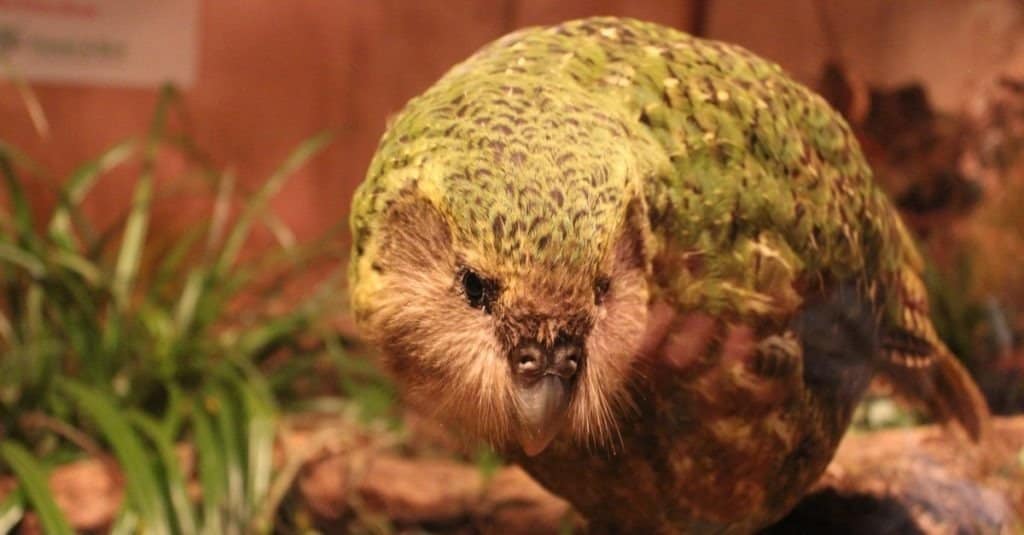
The Kākāpō lives on 5 predator-free islands and is now, finally, moving to the mainland.
©Imogen Warren/Shutterstock.com
Currently, the kakāpō lives on five islands off of the shore of New Zealand.
- Anchor Island (Pukenui)
- Chalky Island (Te Kakahu o Tamatea)
- Codfish Island (Whenua Hou)
- Little Barrier Island (Hauturu-o-Toi)
- Pearl Island (near Rakiura Stewart Island)
Kākāpō is Moving to the Mainland
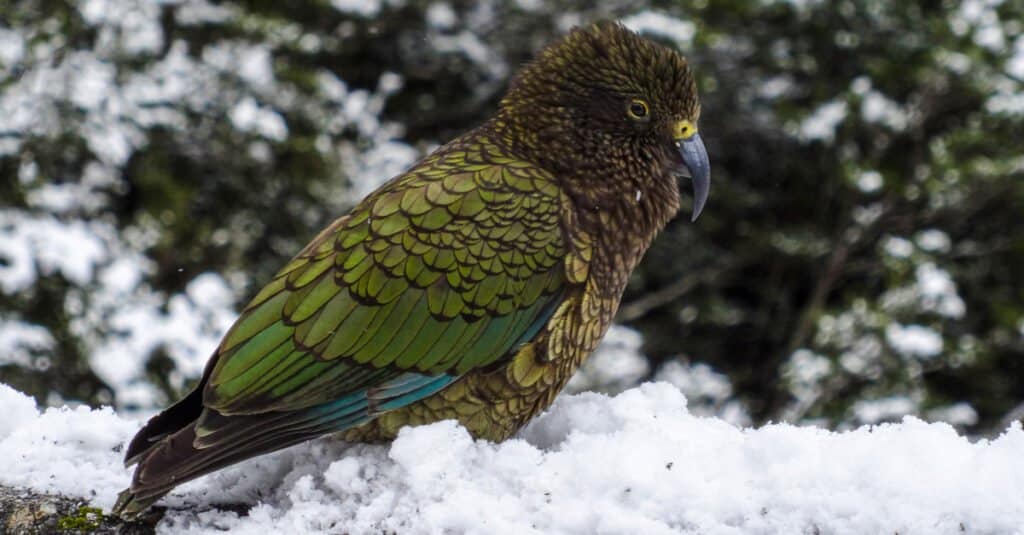
Kākāpō can live up to 100 years. However, overhunting nearly wiped them out.
©heather_p/Shutterstock.com
For the first time in four decades, New Zealand’s unique and highly endangered kākāpō will be reintroduced to the country’s mainlands. These large flightless parrots used to inhabit New Zealand in abundance, but hunting pushed them to the brink of extinction. The last time they lived on the North Island was during the 1960s, and that was 5 birds in captivity.
The South Islands Ngāi Tahu, in partnership with the Department of Conservation, is moving four kākāpō to Sanctuary Mountain (Maungatautari) in Waikato. The four birds are male and will not be for breeding. The project intends to learn what kinds of different habitats are suitable for these birds. This will further help with conservation efforts.
Conservation Efforts for Kākāpō

Many people are making huge efforts to save the New Zealand Kākāpō.
©Imogen Warren/Shutterstock.com
New Zealand is actively engaged in the conservation of the Kākāpō, a species of large, flightless, nocturnal parrot native to the country. The population of Kākāpō has been in severe decline since European settlement, and the species is now critically endangered.
The New Zealand Department of Conservation has taken a number of steps to help save the Kākāpō, including the establishment of the Kākāpō Recovery Programme in 1995. This program has been responsible for the protection and management of the species, as well as the implementation of captive breeding and release programs.
The Kākāpō Recovery Programme has had some success in increasing the population of the species, with the total number of birds increasing from 51 in 1995 to over 200 in 2020. In 2022, the final count of kākāpō is 252 birds.
Other conservation efforts for the Kākāpō include the setting up of predator-free islands, where the birds can breed without the threat of predation, and the use of tracking devices to monitor the movements of individual birds.
In addition to the actions taken by the Department of Conservation, there are also a number of other organizations and individuals involved in the conservation of the Kākāpō. These include the Kākāpō Recovery Trust, a non-profit organization which works to protect the species, and the Kākāpō Appeal, a charitable trust which raises funds for the protection of the bird.
9 Other Endangered Animals of New Zealand
New Zealand is home to many unique and beautiful species of animals and birds. However, some of these species are now facing the threat of extinction. This is due to a variety of factors, including habitat loss, climate change, and hunting. Habitat loss is a result of deforestation, urbanization, and agricultural activities, which reduce the amount of available space for these species to inhabit. Climate change is causing many species to become extinct due to shifting temperatures and increased competition for resources. All of these factors have led to a decrease in the population of certain animals and birds in New Zealand, making them endangered and in need of protection.
1. Takahe
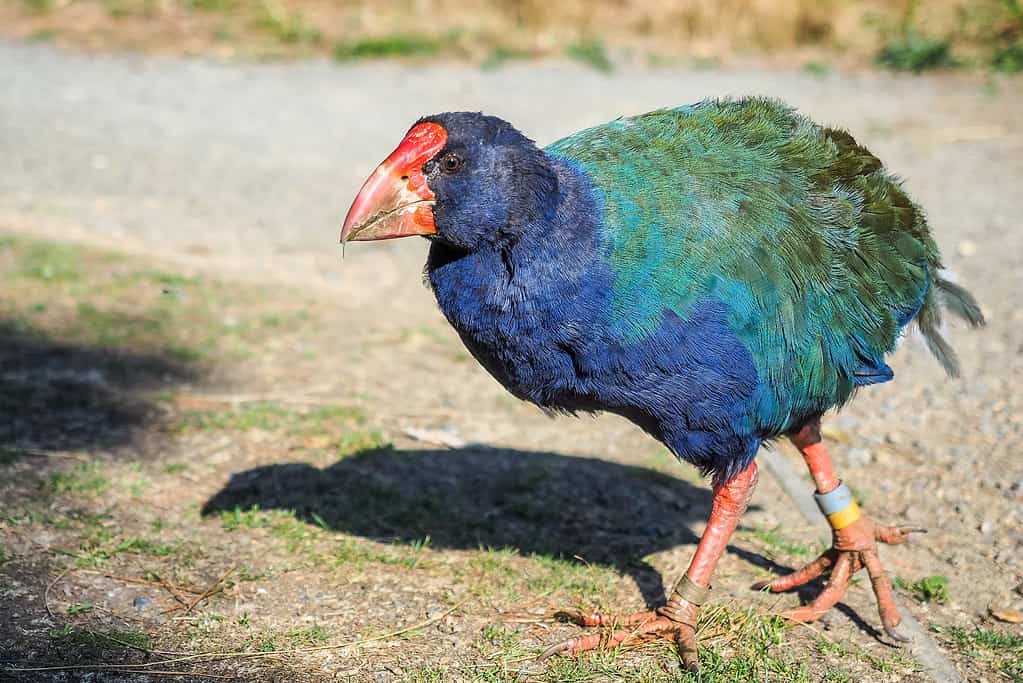
New Zealand is home to the endangered Takahe.
©Robert CHG/iStock via Getty Images
The South Island Takahe (Porphyrio hochstetteri) of New Zealand is an endangered species with a population of only 440. This plump bird has a vivid blue-green coloration, with a deep chestnut on the head and back. Its short wings and long legs make it well-suited to living on the ground. The bill is short and thick, and the tail is short and rounded. It also has a distinctive orange-red eye and a fleshy, bright-colored bill. The South Island Takahe is a large bird weighing up to 6 pounds. It is a flightless bird with strong legs.
2. Antipodean Albatross

The population of Antipodean albatrosses worldwide is very small. It is an endangered species.
©Imogen Warren/Shutterstock.com
The Antipodean albatross (Diomedea antipodensis) is an endangered species endemic to New Zealand, with only 5,100 mating couples remaining. It has a white head and neck, gray back and wings, and black eyes, bill, and feet. Its wingspan can reach up to 9.6 feet. It is both graceful and powerful in flight, and its long, narrow wings have a distinctive flapping motion. It feeds mainly on squid and fish and breeds on remote islands off the coasts of New Zealand.
3. Orange-Fronted Parkakeet
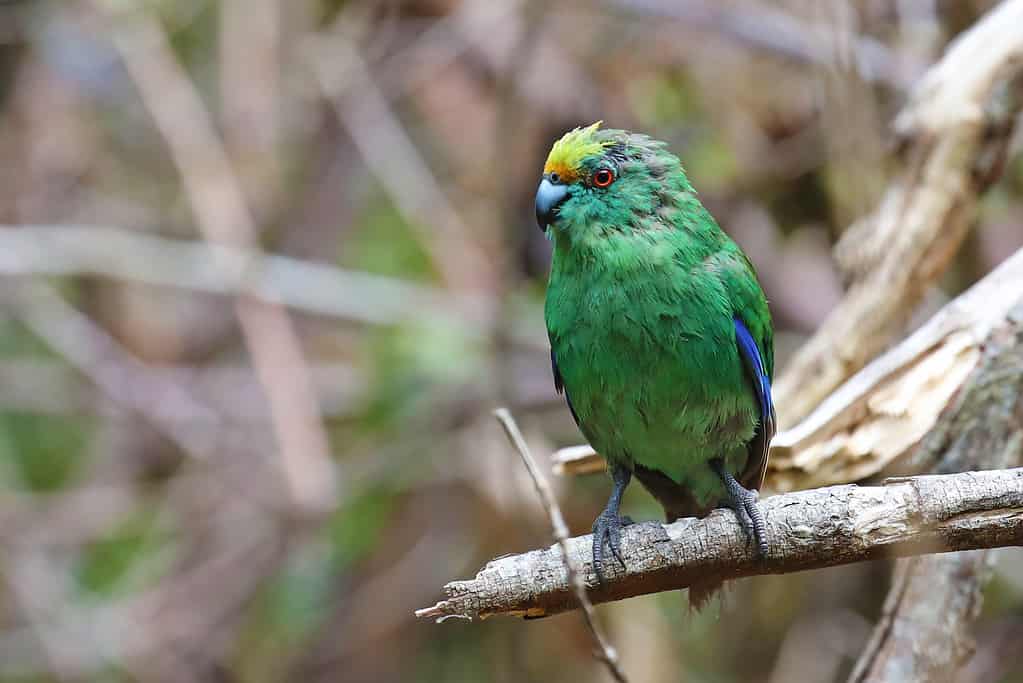
This endangered bird is endemic to New Zealand. The population of these birds is only 360.
©Manakin/iStock via Getty Images
The orange-fronted parakeet, or Kākāriki (Cyanoramphus malherbi) of New Zealand, is an endangered species with a population of only 360. This small parrot has predominantly green feathers, with bright orange feathers on its forehead, cheeks, and throat. Its beak is grey, and it has a yellow patch on its nape and a yellow strip along its wings, which is visible in flight. It has a white ring of feathers around its eyes. The average length is 9 inches, and it weighs around 3 ounces.
4. Fairy Tern
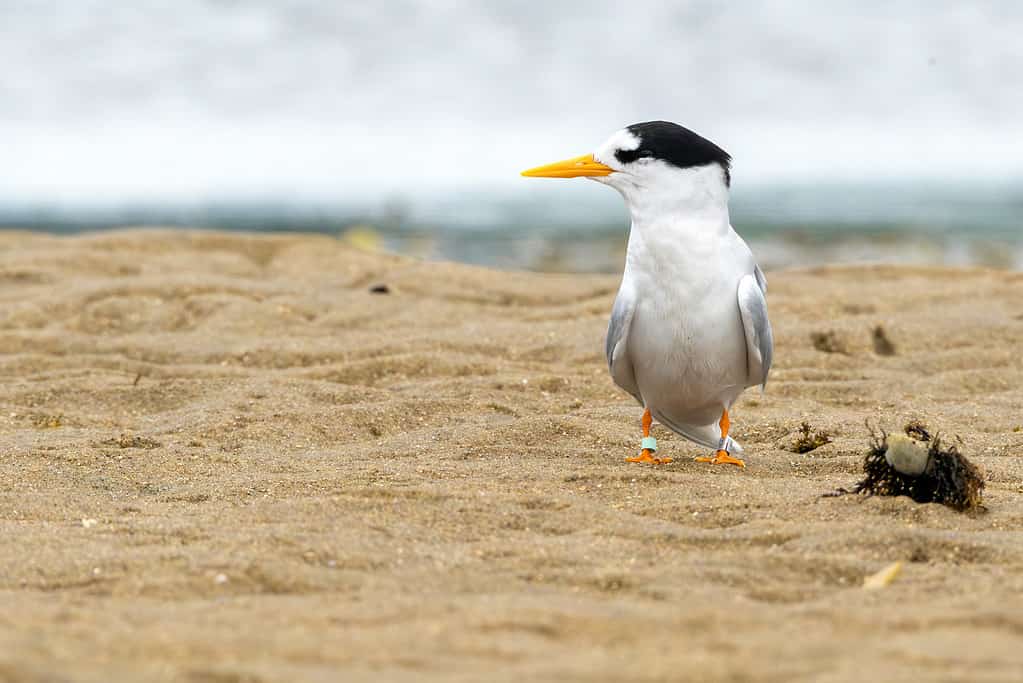
The population of fairy terns is only 40 birds!
©Scott Brooks/iStock via Getty Images
The fairy tern (Sterna nereis davisae) is a small species of seabird native to New Zealand. It is a small to medium-sized seabird that has white feathers on the underside and a pale gray color on top. The fairy tern has a black headpiece that goes all the way down to its eyes. Adults of this species have a black forehead, which gives them their name, while the young ones have a mottled look and don’t possess a black hat. It is an endangered species, with a population of only 40.
5. White Heron
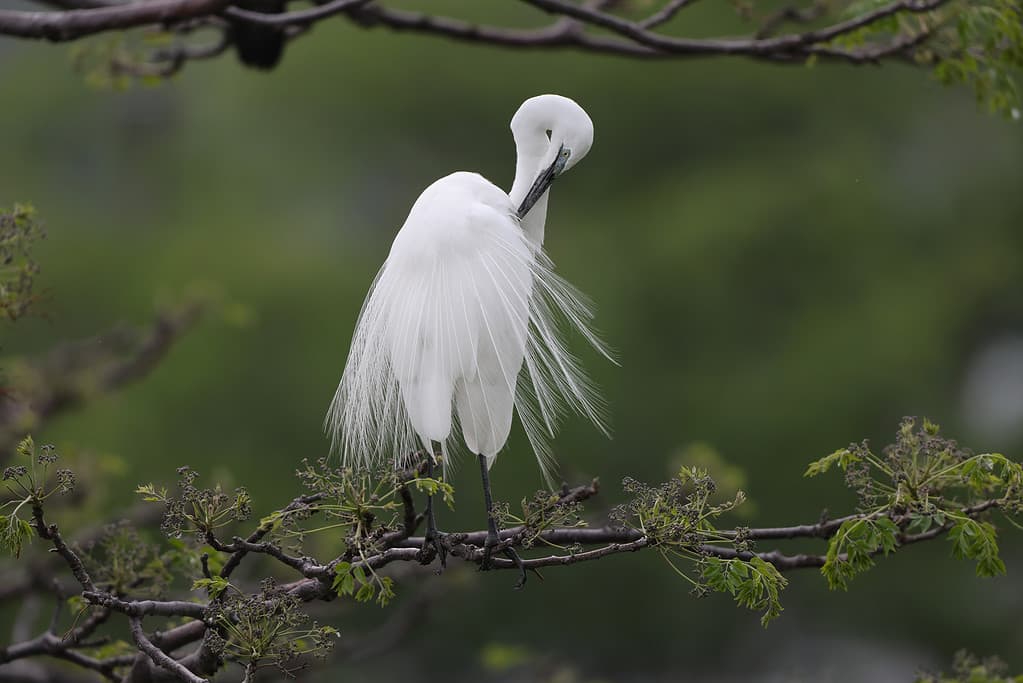
During the mating season, the white heron (Ardea alba modesta) grows long, showy breeding feathers.
©feathercollector/iStock via Getty Images
The white heron (Ardea modesta) of New Zealand is an endangered species with a population of only 120. It is a large, majestic bird with a wingspan of up to 7.5 feet. It has a long, curved neck and a white plumage with black legs and feet. The white heron has a head of white feathers and long tail feathers during the breeding season. Its wings are long and pointed, and its chest is a bright white. It is an elegant bird, often seen slowly soaring through the sky.
6. New Zealand Sea Lion
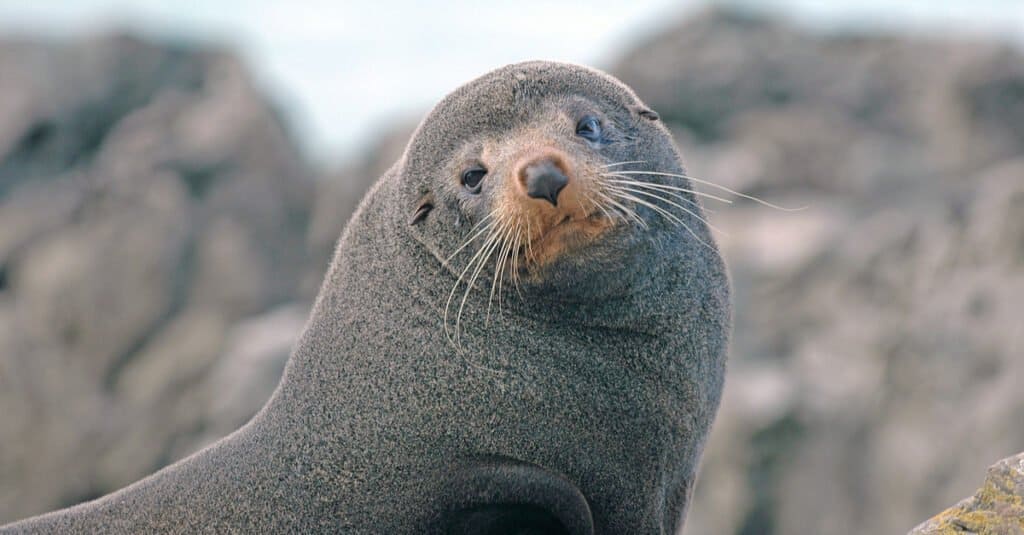
These wonderful sea lions (Phocarctos hookeri) number only 12,000.
©nyker/Shutterstock.com
The New Zealand sea lion (Phocarctos hookeri) is an endangered species with a population of only 12,000. It is a large species with a long, robust body, large head, and short, thick, dark-brown fur. It has webbed front flippers and paddle-shaped rear flippers. The tail is short and blunt. The adult males are larger than females and have a distinctive crest of long, coarse, yellow, and black fur on the head and neck. It has brownish-black eyes and a gentle, pointed muzzle. It is an impressive predator that can dive to depths of up to 900 feet.
7. Maui’s Dolphin
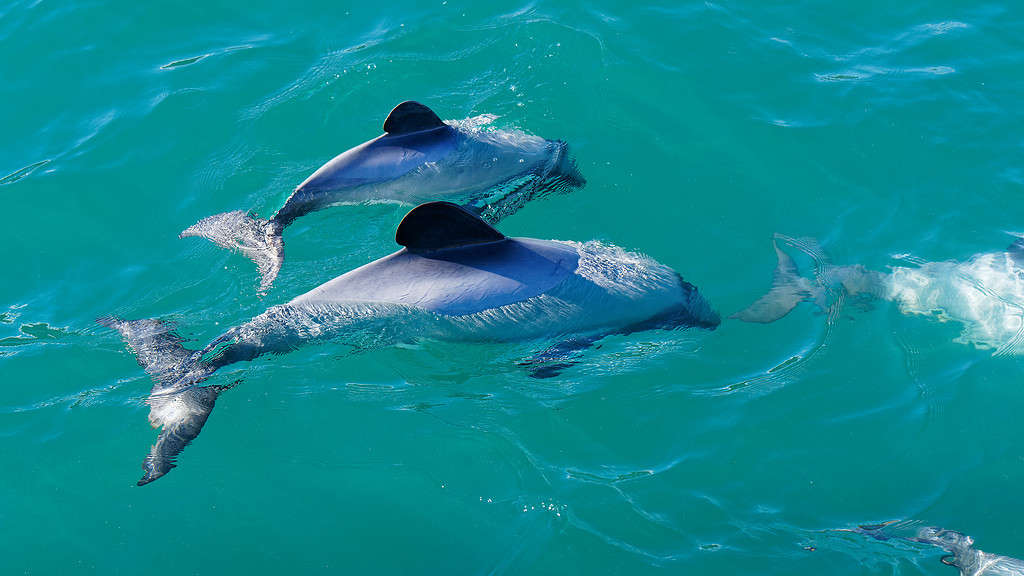
A subspecies of the Hector’s dolphin, the Maui’s dolphin, is nearly extinct.
©Gary Webber/iStock via Getty Images
The Maui’s dolphin (Cephalorhynchus hectori maui) is an endangered species of New Zealand, with a population of only 65. It has a short, stocky body with a rounded head, a small dorsal fin, and a short snout. Its body is gray or black in color, with white and light gray patches along its sides and belly. Adults can measure up to 5 feet (1.7 meters) long and weigh up to 110 pounds. It has unique, rounded eyes and a distinct white band along its lower jaw. Maui’s dolphins live in shallow coastal waters and feed on small fish and squid.
8. Southern Right Whale
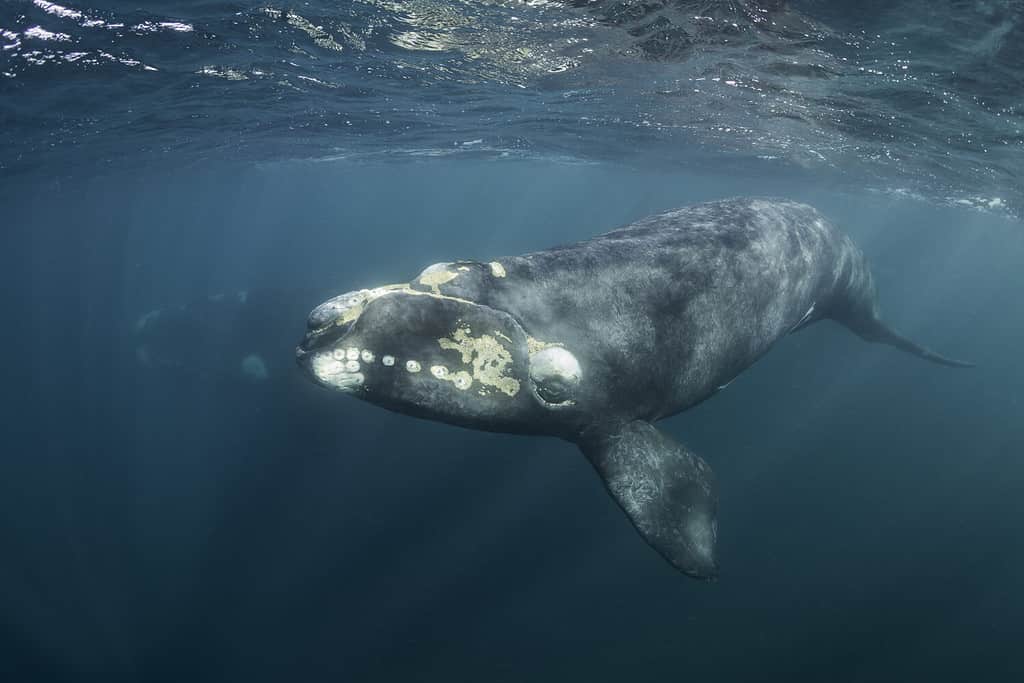
Eubalaena australis, or southern right whale, can reach 51,000 pounds.
©wildestanimal/Shutterstock.com
The southern right whale (Eubalaena australis) is an endangered species with a population of only 3,500 living in the waters off the coast of New Zealand. The whale has a large, stocky body with a V-shaped head, a long arching mouth, and a double blowhole. Its skin is dark grey and covered in white spots and patches. It typically grows up to 50 feet in length and weighs up to 51,000 pounds. Its flippers are broad and tapered with a unique pattern of bumps and ridges. Its tail is broad and paddle-shaped.
9. New Zealand Fur Seal
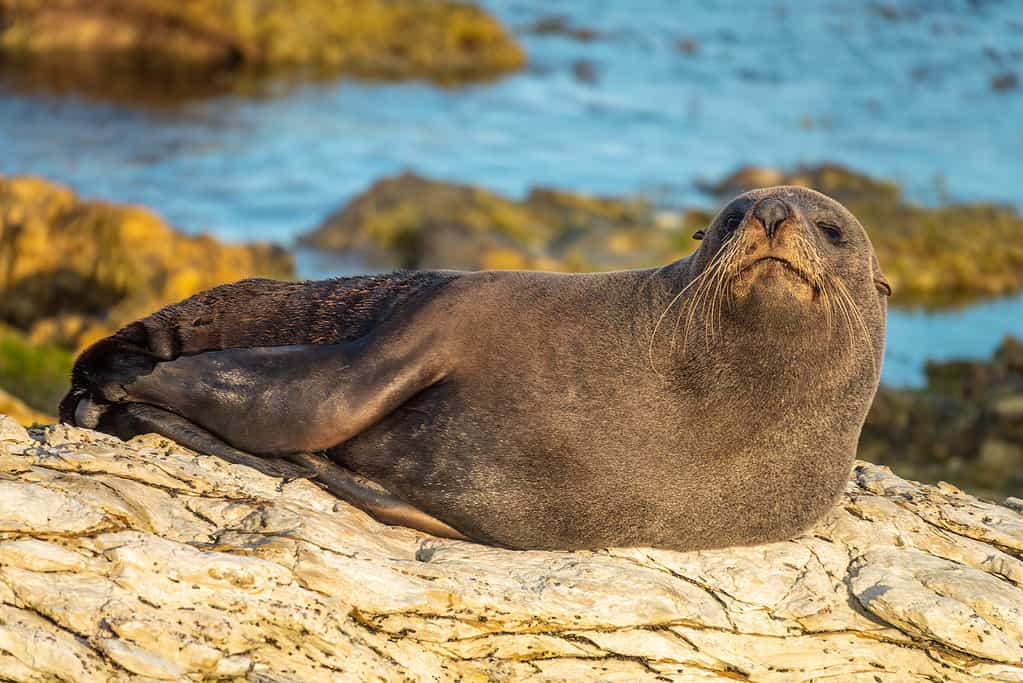
The fur seals of New Zealand are in danger of extinction.
©Leamus/iStock via Getty Images
The New Zealand fur seal (Arctocephalus forsteri) is an endangered species with an estimated population of only 20,000. It has a distinctive physical appearance, with a thick fur coat, pointed snout, and flippers. Males are much larger than females, reaching up to 6 feet in length and 120 pounds in weight. They have a dark brown coat and a silver-gray underside. Their heads are also brown, and their eyes are large and dark. They have small, pointed ears and long whiskers.
The photo featured at the top of this post is © Imogen Warren/Shutterstock.com
Thank you for reading! Have some feedback for us? Contact the AZ Animals editorial team.






